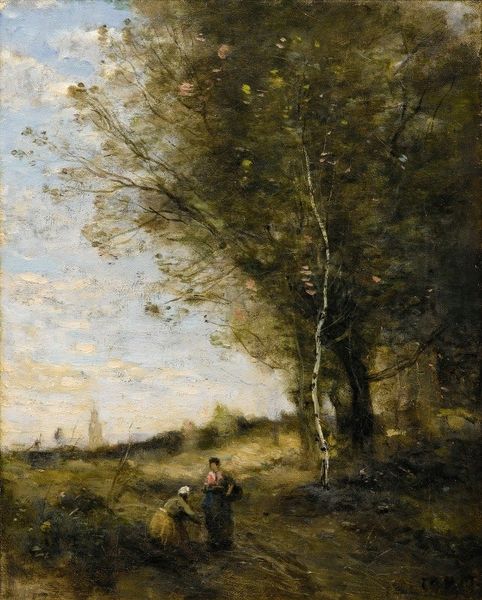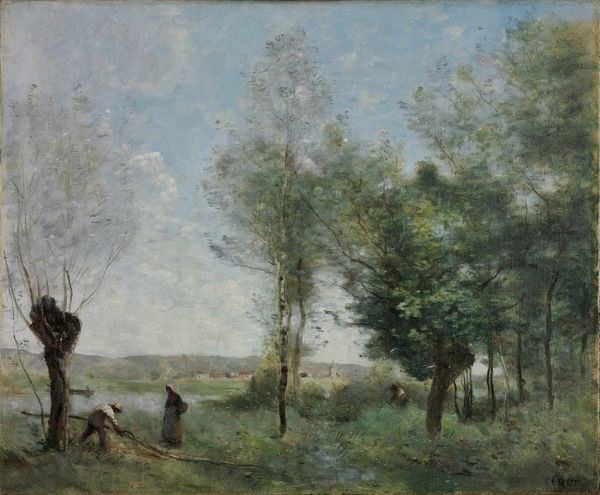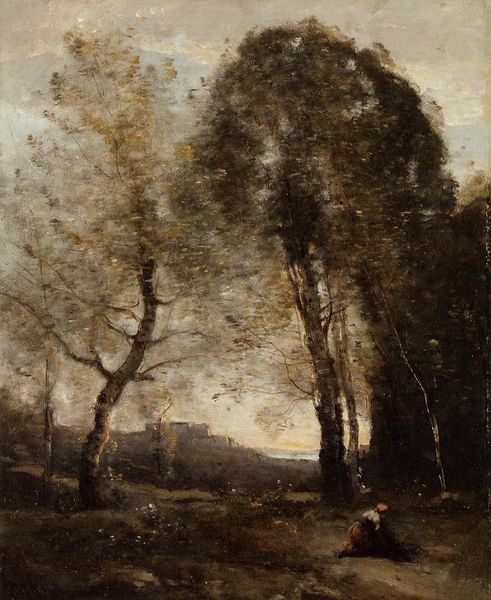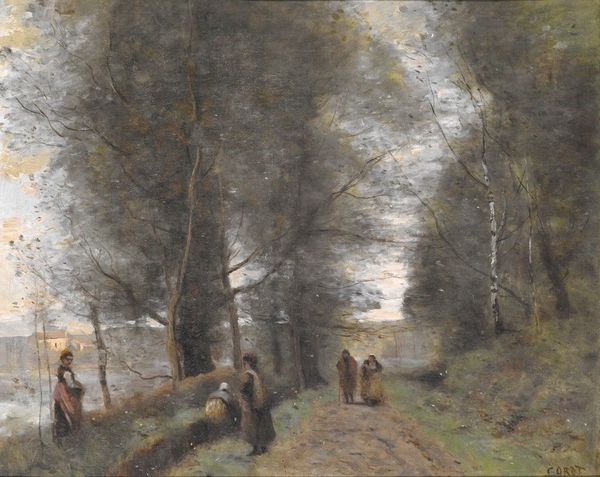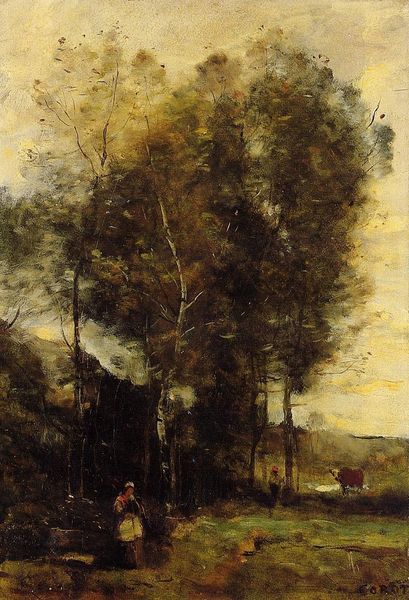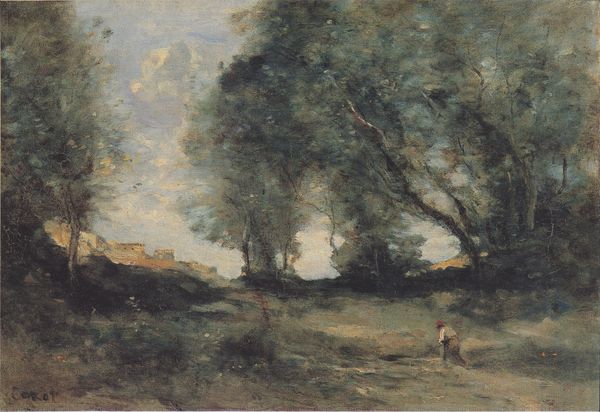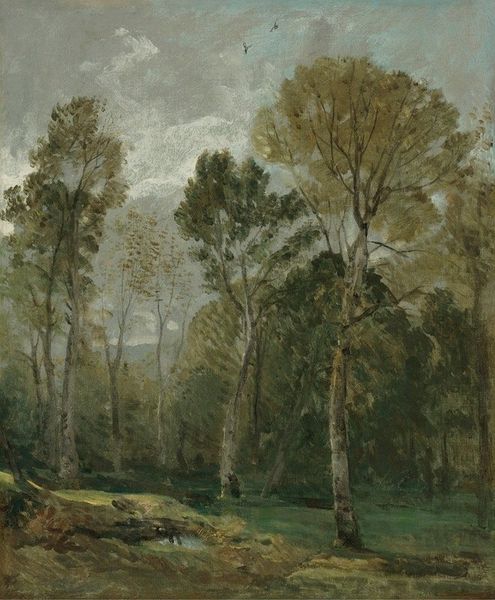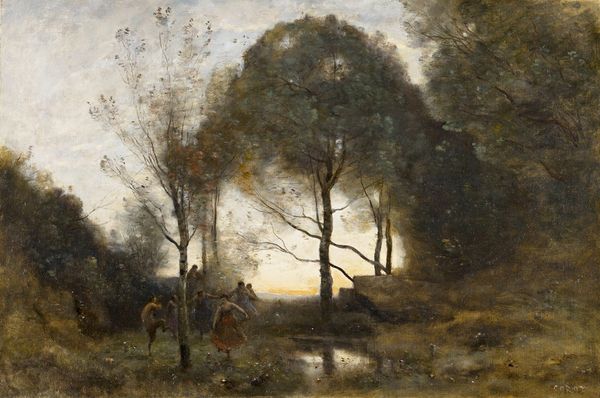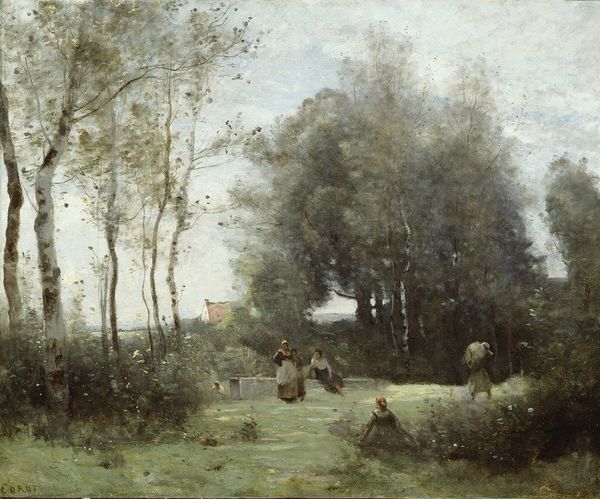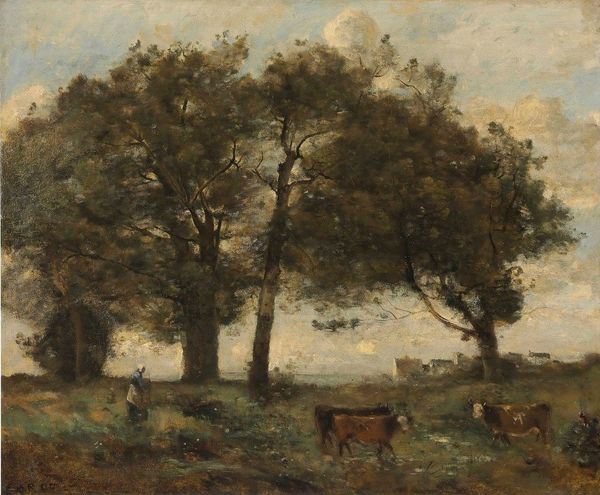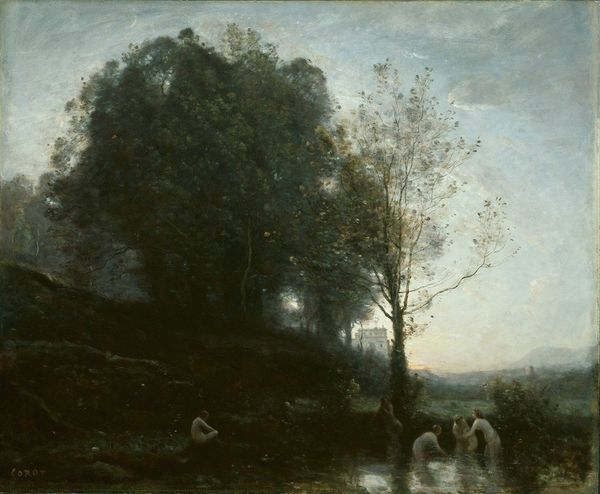
Copyright: Public Domain: Artvee
Curator: Let’s consider "Landscape with Pollard Willows," an oil on canvas executed by Camille Corot sometime between 1840 and 1875. The painting seems to exude a sense of tranquility, wouldn't you agree? Editor: Tranquility is a good word. I'm struck by the soft, diffused light and the muted palette; everything seems to blend almost seamlessly, emphasizing tone rather than sharply defined forms. There's a distinct lack of strong contrast, lending itself to that sense of peace you described. Curator: Absolutely. The image seems idyllic, even pastoral, in its depiction of rural life. The pollard willows themselves have been subject to human interaction, pruned for resources but still growing and enduring—suggesting resilience within the working landscape. There’s a human figure in the landscape too, part of its rhythm. Editor: That human presence is interesting. There's a shepherdess, perhaps, and a few farm animals, but they’re rendered so subtly that they don’t dominate the composition. Corot's interest truly lies in the way light filters through the trees, creating subtle tonal variations across the landscape. Observe how the brushwork becomes more broken and textured in the foreground, while the distant building fades into almost ethereal obscurity. It brings up notions of structuralist approach. Curator: And in that very act of softening the background, of prioritizing light and mood over precise detail, he evokes a specific atmosphere linked to the transformation of the French countryside in the 19th century. Artists sought to depict not just the visual reality of nature but its emotional and societal resonance as a sort of national mythology. The genre of landscape can tell us a lot about the place of peasantry within art. Editor: It's a delicate balancing act: Corot provides us enough information to identify elements—trees, a figure, animals—but abstracts them just enough that they contribute to a more formal study of light, shadow, and atmosphere. The willows almost create a frame for a world that can never fully exist. Curator: Corot encapsulates, in a sense, the transient beauty and cyclical renewal of nature, and humanity’s ever-present relationship to it, and the changes it underwent because of modernization. Editor: A scene that evokes contemplation and an exploration of painting's elemental qualities, nicely capturing something about time and place, I think.
Comments
No comments
Be the first to comment and join the conversation on the ultimate creative platform.


